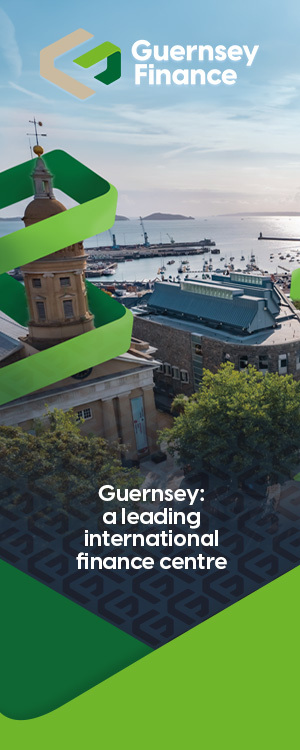Jurisdictions
- Bermuda
- Guernsey
- Bahamas
- Barbados
- Seychelles
- Liechtenstein
- Singapore
- British Virgin Islands
- Hong Kong
- Luxembourg
- Antigua
- Switzerland
- Cayman Islands
- Nevis
- New Zealand
- Belize
- Netherlands
- Ireland
- United Kingdom
- United Arab Emirates
- Mauritius
- Jersey
- Labuan
- Rwanda
- Gibraltar
- Marshall Islands
- Samoa
- Panama
- St Vincent & The Grenadines
- Austria
- Madeira
Industry Sectors
- Hedge Funds and Alternative Investments
- Citizenship and Residency
- International Tax Planning
- Islamic Finance
- Fintech
- Insurance/Reinsurance
- Investment Funds
- Trusts And Foundations
- Private Banking
- Wealth Management
- Philanthropy
- Offshore Securities Markets
- Sustainable Finance
- Family Offices
- Arbitration
- Regulation and Policy
- Comment
- Big Debate
- In the Chair
- Global Regulation & Policy
- Features
- Sector Research
- Jurisdictions
- Back
- Barbados
- Cayman Islands
- British Virgin Islands
- Singapore
- Guernsey
- Bahamas
- Hong Kong
- Switzerland
- Luxembourg
- Liechtenstein
- Netherlands
- New Zealand
- Bermuda
- Jersey
- Ireland
- Rwanda
- Belize
- Labuan
- United Arab Emirates
- Mauritius
- Antigua
- Austria
- Seychelles
- Anguilla
- Samoa
- Marshall Islands
- Gibraltar
- Nevis
- United Kingdom
- North America
- Canada
- Asia
- Africa
- Latin America
- Australasia
- Europe
- Turks & Caicos Islands
- Industry Sectors
- Back
- Hedge Funds and Alternative Investments
- Citizenship and Residency
- International Tax Planning
- Islamic Finance
- Fintech
- Insurance/Reinsurance
- Investment Funds
- Trusts And Foundations
- Private Banking
- Wealth Management
- Philanthropy
- Offshore Securities Markets
- Sustainable Finance
- Family Offices
- Arbitration
- Regulation and Policy
23/06/21
Wealth Structuring In The Netherlands

For many years the Netherlands has had a relatively simple system for taxing wealth. All assets and liabilities (other than substantial shareholdings of 5 per cent or more) are put into a separate category (called Box 3) and taxed on the basis of a notional return on the value of the net assets (assets less liabilities) on 1 January of the year concerned. This tax is deemed to cover both regular income, such as dividends and interest, and capital gains.
Until recently this system was extremely straightforward. The deemed return was 4 per cent and this was taxed at a rate of 30 per cent so that effectively, it was similar to a wealth tax of 1.2 per cent (although for international tax treaty purposes, it was considered by the Netherlands to be an income tax and not a wealth tax).
When the system was introduced in 2001 it was quite easy to earn 8 per cent on a deposit account, so most taxpayers were enthusiastic as the effective tax rate was very low. Gradually, however, it has become more and more difficult to realise a 4 per cent return on investment, especially for smaller investors, and their situation deteriorated further after 2008. Currently, it is difficult to get any return at all on a bank account (indeed, some accounts carry a negative interest rate) so there has been substantial pressure to change the system, including some court cases against the government invoking human rights treaties and claiming expropriation. While the cases have not directly yielded anything for the taxpayers, the government has responded by amending the legislation somewhat. This has resulted in a more complex arrangement whereby the deemed return depends on the level of assets held. For lower levels of wealth, a taxpayer is deemed to hold most assets in a bank deposit (“the savings element”) and for higher levels, the assets are considered to be held in other investments (the “investment element”) which are deemed to yield more. Currently, the deemed return on the savings element is to be 0.03 per cent and on the investment element, 5.69 per cent. Assets up to EUR 50,000 are exempt. For the next EUR 50,000 of assets, the savings element is deemed to be 67 per cent and the investment element 33 per cent. The second tax band runs from EUR 50,000 to EUR 950,000 and 21 per cent of the total is deemed to fall under the savings category and 79 per cent in the investment category. Above EUR 950,000, the entire amount is considered to be investment.
The main residence and qualifying loans related to the main residence fall outside this calculation (there are separate rules for the deductibility of the interest in that case), as does the substantial shareholding mentioned earlier.
Most liabilities are deductible, including inheritance tax, but excluding most other taxes. There is a threshold of EUR 3,200 (EUR 6,400 for taxable partners).
The tax on the deemed return is 31 per cent which results in an effective tax of between 0.59 and 1.76 per cent.
Partners And 30 per cent Ruling
For married couples and similar fiscal partners the amounts are combined. Fiscal partners can allocate their assets between themselves, as they desire, from year to year. This can have some benefits, especially if one of the partners has substantially more assets than the other. However, the biggest benefit applies to situations where one of the partners has a 30 per cent ruling for highly skilled migrants. The qualifying expatriate taxpayer can opt for partial non-residence which means that almost all the Box 3 income is not taxable in the Netherlands (the major exception is real estate in the Netherlands). His/her partner can allocate their assets to the partially non-resident taxpayer so that effectively they are not taxable either.
Foreign Income
For normal taxpayers, dividends, interest, and royalties from outside the Netherlands are taxable in the Netherlands but the full amount of dividend or other withholding tax levied by the other country is deductible from the Box 3 tax (if a tax treaty applies, the deduction must not exceed that permitted under the treaty). This is quite unusual because the credit is not restricted to the tax on that particular source of income so it can effectively also be credited against other deemed income falling in Box 3.
Tax relief in respect of other foreign income (for practical purposes normally real estate) is straightforward: broadly speaking it is exempt although since the tiered system, the exemption is not quite complete because it is based on the average tax rate rather than the top slice.
Planning
The system is still relatively simple in that there is no requirement to calculate actual income or capital gains. However, it means that the tax levied bears no direct relationship to the actual income and gains received. A gold bar, for instance, will not yield any income although it could result in a capital gain (or a capital loss) but it will always be taxed on a notional return.
This can be avoided by placing the assets in a company since, provided the holding is at least 5 per cent, it is taxed in a different category (Box 2). A regular Dutch company with profits up to EUR 245,000 (this is planned to increase to EUR 400,000 from 2022) is subject to corporate income tax at a rate of 15 per cent. Profits in excess of EUR 245,000 (EUR 400,000 from 2022) are subject to corporate income tax at a rate of 25 per cent. This tax is levied only on the actual income so that if the actual income is lower than the deemed income, there can be a significant benefit. However, account needs to be taken of the fact that to get the money out of the company will involve either a dividend or selling shares (assuming a repayment of capital is not possible) and for a resident this is effectively taxed at 26.9 per cent in Box 2. This means that in total the tax amounts to approximately 37.9 per cent which, although it is higher than the Box 3 rate of 31 per cent, is only levied on the actual income.
Furthermore, the 26.9 per cent can be postponed until the actual dividend is paid out. Of course, there are costs involved in setting up and running a company, including accounting, filing accounts, tax returns and so on. And the corporate income tax rate is higher if the limits referred to are exceeded. In certain cases, if the shareholder is involved in the activities of the company, he/she may be required to receive a reasonable salary. Care is also needed since a capital gain will be taxed in full, so for assets on which a significant gain may be made this may not be the ideal route.
One could, of course, choose a company in a low tax jurisdiction or an exempt Dutch investment company. However, this does not entirely resolve the issue of the notional return, since exempt or low taxed (foreign) investment companies are also taxed on a notional return for the shareholder. The shareholder is deemed to make a return on the value of the assets in the company at the top investment rate (i.e. 5.69 per cent) and then has to pay tax at the rate applicable to income from a substantial interest, i.e. 26.9 per cent. The lower rates for deemed savings income do not apply. The deemed income is reduced by any actual dividends paid out and on a subsequent sale of the company, its value will be considered to have increased by the amount of the notional return taxed earlier. If the actual return on the assets turns out to be lower than expected after they have been transferred to a company, then by carefully timing a liquidation it is possible to mitigate the effects of this by creating a loss which can be carried back one year and offset against the notional Box 2 return of that year.
So can one move assets in and out of a company as one choses (“box hopping”)? No, there are anti- abuse rules to prevent individuals moving assets to other boxes around 1 January of each year to prevent them being taken into account in determining the nominal return and these rules can result in double taxation. If assets are moved into an exempt investment company (or low taxed foreign investment company) and then back out within 18 months, then they have to be shown in Box 3 for the entire period (even if they are also taxable in Box 2).
Foreign Investors In Dutch Real Estate
There are various possibilities for non-residents to invest in real estate in the Netherlands while mitigating the amount of tax payable. The notional return rules also apply here so that, provided the investment cannot be considered a business, a capital gain will not be taxed as such. If the investment is made largely with borrowed funds, the amount borrowed can be deducted from the value of the real estate so that only the balance is taken into account in determining the taxable return. Careful planning is needed here and obviously the tax position in the home country also needs to be taken into account.
Thus, if a group of individuals wish to purchase some real estate, it may be preferable for them to do so through a form of transparent partnership (certain forms of limited partnership are considered transparent for Dutch tax purposes, but not all). The investment needs to be structured carefully and in particular, it is important to ensure that the activity does not become a business in which case the income will be taxed in full in the Netherlands.
Consideration needs to be given to real estate transfer taxes which have increased significantly for those not planning to use the property as their main residence and can now amount to 8 per cent. However, the Netherlands levies no gift or inheritance tax on non-residents (except certain deemed residents of the Netherlands, in particular individuals who have Dutch nationality and have lived in the Netherlands within the previous 10 years).
Conclusion
The Netherlands has an unusual system for taxing unearned income. Despite the fact that in many cases, it can result in tax which exceeds the actual income; but with careful planning, there are opportunities for both residents and non-residents.
About the Author

John Graham
John is Partner of Graham Smith & Partners International Tax Counsel, specialising in international taxation, including family owned companies and the (international) families behind them, trusts in civil law jurisdictions, international structures and expatriates. He has written for various publications on international and Dutch taxation, and is the former editor of the International Handbook of Corporate and Personal Tax (Chapman & Hall). He also taught International Tax and European Tax Policy at the School of International Studies, AVANS University of Applied Science.


